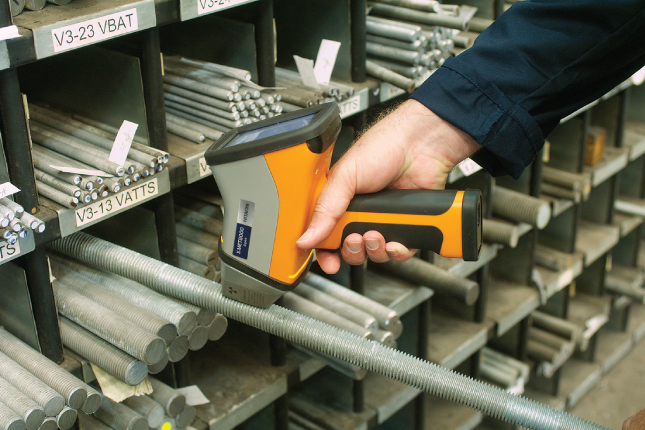There are many ways that the wrong material can accidentally find its way into your products in a busy manufacturing facility. And whilst sometimes non-conforming material is used to save costs, it can halt production, waste time and be costly in the long run, to your bottom line and reputation.
For example, in 2016 a Chinese dehumidifier manufacturer used sub-standard materials in their appliances that caused the products to catch fire causing them to be fined $15 million. As a cost-cutting measure, the company had decided to use lower-grade non-fire-retardant material.
Using raw materials that are non-conforming can be costly because of rework, scrap material, customer returns and potential loss of contracts, not to mention human life.

In a busy production environment, when supplied material or components all look very similar, it’s very easy to pick up the wrong part. The best way of preventing this is to verify the material composition right before machining.
Hitachi’s range of XRF and LIBS handheld analyzers are portable, lightweight and easy to use by anyone. Accurate readings can be taken in seconds, so it’s a simple and straightforward test to verify the material in production. It’s possible to set up the analyzer to give a pass or fail reading on the screen, so there’s no room for ambiguity or mis-interpretation of results.
Using the right grade of base material, like stainless steel, is essential to ensure the finished component has the right level of corrosion resistance. It’s impossible to tell the difference between, say, 304 and 304L grade steel by eye. You can be absolutely sure of using the right grade of material just by carrying out a simple check.
Our mobile OES (optical emission spectroscopy) analyzers can detect very low limits of most trace elements, including carbon in L-grade steels. You can use it to measure other trace elements too, such as boron, nitrogen, sulfur and phosphorous.
Unfortunately, even more so today due to the complexity of supply chains, it’s not enough to rely on the certificates. Something that became very obvious to UK firm GT Factors. They used our Vulcan handheld LIBS analyzer to check some incoming material and discovered they had received 304 grade stainless steel instead of 316 grade.
Running your own tests on received material is faster and cheaper than outsourcing the test, and certainly safer than relying on product labelling. GT Factors now rely on Hitachi’s Vulcan handheld analyzer to verify the type of stainless steel they receive.
When you are dealing with materials like stainless steel that look identical, yet have crucial differences in composition, you have to be vigilant about checking and re-checking your inventory. In production, it’s easy for a stamp or document to go missing. A good example of this is when cutting a piece of metal, which has a stamp on it. When the end of the metal with the stamp is used, the unmarked piece is left on the shelves. Without any labels on it, it may end up in the wrong place and you’ll end up with inventory mix-up.
Rather than wait for a problem to hit production, it’s good practice to check your inventory against material grade and composition as part of your stock control procedure.
Our range of mobile and handheld analyzers make this kind of test quick and straightforward. By simply pointing the handheld device to the material and pressing the trigger, the composition appears on the display in seconds. Adding this test to part of a standard stock-take is simple.
It’s great that you’ve started doing all this testing to give you reassurance of the metal alloys you’re receiving or producing. However, you need to ensure you’ve also got some records on file, should any issue arise in the future so you can easily provide proof of the verification testing you’re doing.
Our handheld analyzers come with ExTOPE Connect, an advanced data management and storage service that’s designed to help you record, store and access your results from your measurements. Sample chemistry, photographs, grade ID, spectra and your notes are stored in a secure cloud. You can securely access the results from any computer whenever you like.
For more information on which analyzer is best for your facility, contact us or learn more about our range of analyzers to help you deliver 100% to specification.